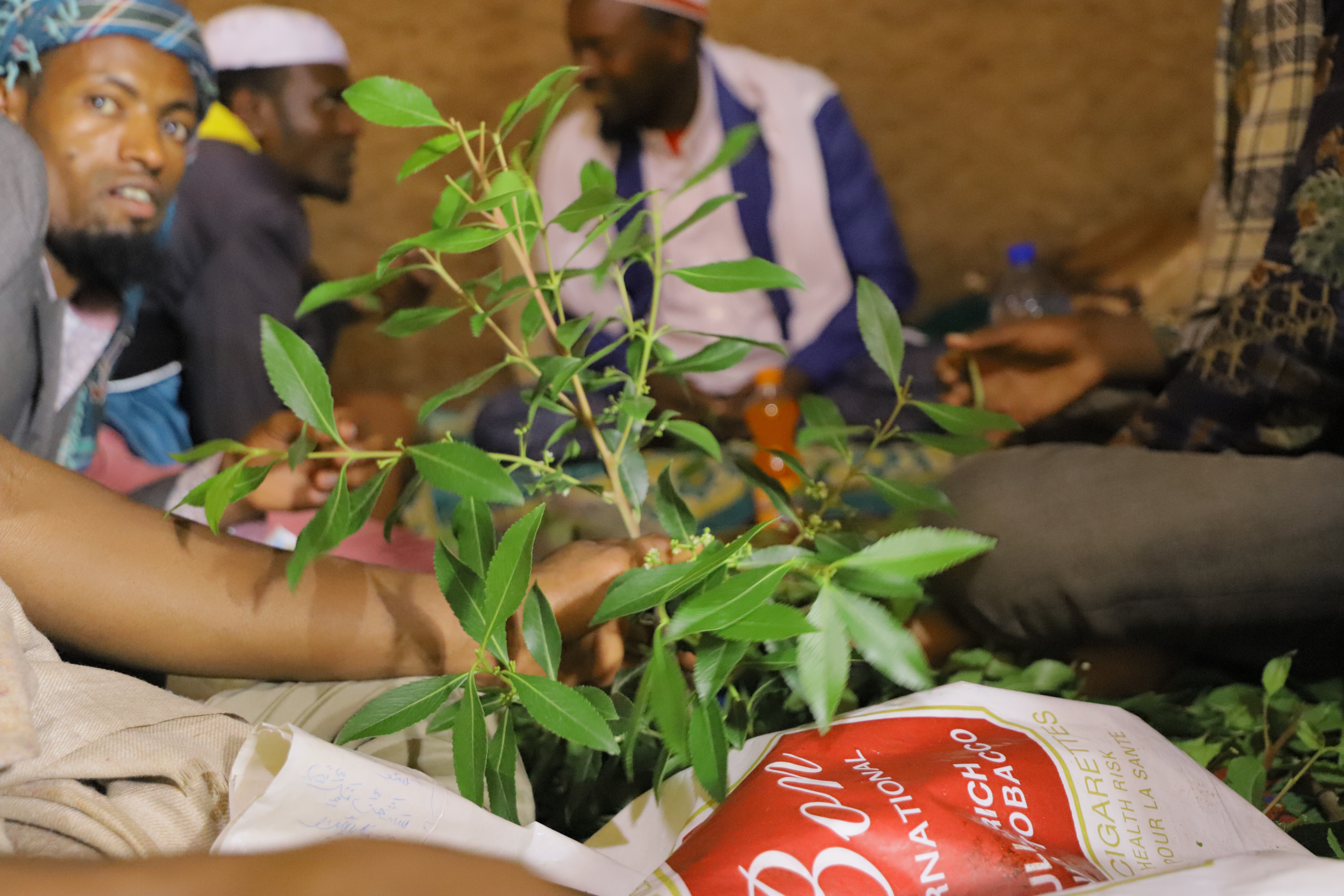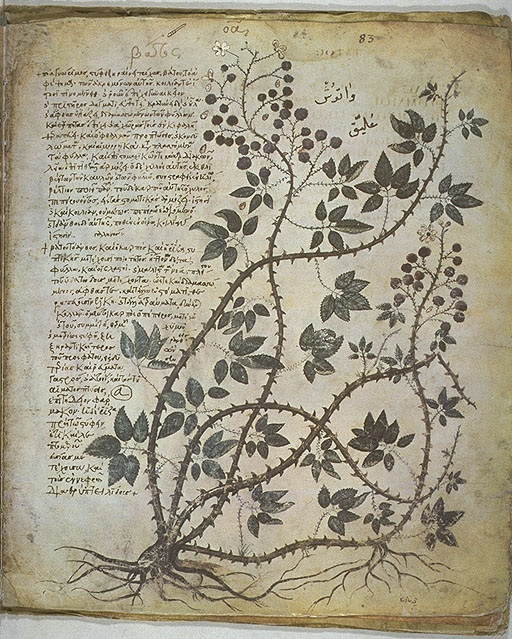|
Ethnobotany
Ethnobotany is an interdisciplinary field at the interface of natural and social sciences that studies the relationships between humans and plants. It focuses on traditional knowledge of how plants are used, managed, and perceived in human societies. Ethnobotany integrates knowledge from botany, anthropology, ecology, and chemistry to study plant-related customs across cultures. Researchers in this field document and analyze how different societies use local flora for various purposes, including medicine, food, religious use, intoxicants, building materials, fuels and clothing. Richard Evans Schultes, often referred to as the "father of ethnobotany", provided an early definition of the discipline: Since Schultes' time, ethnobotany has evolved from primarily documenting traditional plant knowledge to applying this information in modern contexts, particularly in pharmaceutical development. The field now addresses complex issues such as intellectual property rights and equitab ... [...More Info...] [...Related Items...] OR: [Wikipedia] [Google] [Baidu] |
Botany
Botany, also called plant science, is the branch of natural science and biology studying plants, especially Plant anatomy, their anatomy, Plant taxonomy, taxonomy, and Plant ecology, ecology. A botanist or plant scientist is a scientist who specialises in this field. "Plant" and "botany" may be defined more narrowly to include only land plants and their study, which is also known as phytology. Phytologists or botanists (in the strict sense) study approximately 410,000 species of Embryophyte, land plants, including some 391,000 species of vascular plants (of which approximately 369,000 are flowering plants) and approximately 20,000 bryophytes. Botany originated as history of herbalism#Prehistory, prehistoric herbalism to identify and later cultivate plants that were edible, poisonous, and medicinal, making it one of the first endeavours of human investigation. Medieval physic gardens, often attached to Monastery, monasteries, contained plants possibly having medicinal benefit. ... [...More Info...] [...Related Items...] OR: [Wikipedia] [Google] [Baidu] |
Entheogen
Entheogens are psychoactive substances used in spiritual and religious contexts to induce altered states of consciousness. Hallucinogens such as the psilocybin found in so-called "magic" mushrooms have been used in sacred contexts since ancient times. Derived from a term meaning "generating the divine from within" entheogen have been used to facilitate transcendence, heaving, divination and mystical insight. Entheogens have been used in various ways, including as part of established religious rituals and as aids for personal spiritual development. Anthropological study has established that entheogens are used for religious, magical, shamanic, or spiritual purposes in many parts of the world. Civilizations such as the Maya and Aztecs used psilocybin mushrooms, peyote, and morning glory seeds in ceremonies meant to connect with deities and perform healing. They have traditionally been used to supplement many diverse practices geared towards achieving transcendence, including ... [...More Info...] [...Related Items...] OR: [Wikipedia] [Google] [Baidu] |
Traditional Knowledge
Traditional knowledge (TK), indigenous knowledge (IK), folk knowledge, and local knowledge generally refers to knowledge systems embedded in the cultural traditions of regional, indigenous, or local communities. Traditional knowledge includes types of knowledge about traditional technologies of areas such as subsistence (e.g. tools and techniques for hunting or agriculture), midwifery, ethnobotany and ecological knowledge, traditional medicine, celestial navigation, craft skills, ethnoastronomy, climate, and others. These systems of knowledge are generally based on accumulations of empirical observation of and interaction with the environment, transmitted orally across generations. The World Intellectual Property Organization (WIPO) and the United Nations (UN) include traditional cultural expressions (TCE) in their respective definitions of indigenous knowledge. Traditional knowledge systems and cultural expressions exist in the forms of culture, stories, legends, folklor ... [...More Info...] [...Related Items...] OR: [Wikipedia] [Google] [Baidu] |
Richard Evans Schultes
Richard Evans Schultes (''SHULL-tees'';Jonathan Kandell ''The New York Times'', April 13, 2001, Accessed April 26, 2020. January 12, 1915 – April 10, 2001) was an American biologist, considered to be the father of modern ethnobotany. He is known for his studies of the uses of plants by indigenous peoples, especially the indigenous peoples of the Americas. He worked on entheogenic or hallucinogenic plants, particularly in Mexico and the Amazon, involving lifelong collaborations with chemists. He had charismatic influence as an educator at Harvard University; several of his students and colleagues went on to write popular books and assume influential positions in museums, botanical gardens, and popular culture. His book ''The Plants of the Gods: Their Sacred, Healing, and Hallucinogenic Powers'' (1979), co-authored with chemist Albert Hofmann, the discoverer of LSD, is considered his greatest popular work: it has never been out of print and was revised into an expanded secon ... [...More Info...] [...Related Items...] OR: [Wikipedia] [Google] [Baidu] |
Medicinal Plants
Medicinal plants, also called medicinal herbs, have been discovered and used in traditional medicine practices since prehistoric times. Plants synthesize hundreds of chemical compounds for various functions, including Plant defense against herbivory, defense and protection against insects, fungi, Plant disease resistance, diseases, against parasites and herbivorous mammals. The earliest historical records of herbs are found from the Sumerian civilization, where hundreds of medicinal plants including opium are listed on clay tablets, . The Ebers Papyrus from ancient Egypt, , describes over 850 plant medicines. The Greek physician Pedanius Dioscorides, Dioscorides, who worked in the Roman army, documented over 1000 recipes for medicines using over 600 medicinal plants in , ; this formed the basis of pharmacopoeias for some 1500 years. Drug research sometimes makes use of ethnobotany to search for pharmacologically active substances, and this approach has yielded hundreds of use ... [...More Info...] [...Related Items...] OR: [Wikipedia] [Google] [Baidu] |
Pedanius Dioscorides
Pedanius Dioscorides (, ; 40–90 AD), "the father of pharmacognosy", was a Greek physician, pharmacologist, botanist, and author of (in the original , , both meaning "On Medical Material") , a 5-volume Greek encyclopedic pharmacopeia on herbal medicine and related medicinal substances, that was widely read for more than 1,500 years. For almost two millennia Dioscorides was regarded as the most prominent writer on plants and plant drugs. Life A native of Anazarbus, Cilicia, Asia Minor, Dioscorides likely studied medicine nearby at the school in Tarsus, which had a pharmacological emphasis, and he dedicated his medical books to Laecanius Arius, a medical practitioner there. Though he writes he lived a "soldier's life" or "soldier-like life", his pharmacopeia refers almost solely to plants found in the Greek-speaking eastern Mediterranean, making it likely that he served in campaigns, or travelled in a civilian capacity, less widely as supposed. The name Pedanius is Roman, ... [...More Info...] [...Related Items...] OR: [Wikipedia] [Google] [Baidu] |
Schultes Amazon 1940s
Schultes is a surname. Notable people with the surname include: * Josef August Schultes (1773–1831), Austrian botanist and professor in Vienna, father of Julius * Julius Hermann Schultes (1804–1840), Austrian botanist in Vienna * Richard Evans Schultes (1915–2001), American ethnobotanist See also * {{surname ... [...More Info...] [...Related Items...] OR: [Wikipedia] [Google] [Baidu] |
John William Harshberger
John William Harshberger, (January 1, 1869 – April 27, 1929) was an American botanist who specialized in plant geography, ecology and plant pathology. He taught at the University of Pennsylvania for more than 35 years. He was an ardent plant conservationist and he is credited with coining the term ''"ethnobotany"''.Haut (1997) Biography Harshberger was born January 1, 1869, in Philadelphia, the son of Abram Harshberger and Jane Harris Walk Harshberger. His father was a physician and Civil War veteran. He became interested in plants as a young child and made a small herbarium at age seven. He graduated from Central High School and entered the University of Pennsylvania in 1888. During the summer of 1890 he studied at the Arnold Arboretum of Harvard University. Harshberger received his bachelor's degree in 1892 and a doctorate in 1893. His doctorate thesis, "Maize: a Botanical and Economic Study", asserted that maize evolved from teosinte, a Mexican grass; his theory has since bee ... [...More Info...] [...Related Items...] OR: [Wikipedia] [Google] [Baidu] |
North Africa
North Africa (sometimes Northern Africa) is a region encompassing the northern portion of the African continent. There is no singularly accepted scope for the region. However, it is sometimes defined as stretching from the Atlantic shores of the Western Sahara in the west, to Egypt and Sudan's Red Sea coast in the east. The most common definition for the region's boundaries includes Algeria, Egypt, Libya, Morocco, Tunisia, and Western Sahara, the territory territorial dispute, disputed between Morocco and the list of states with limited recognition, partially recognized Sahrawi Arab Democratic Republic. The United Nations’ definition includes all these countries as well as Sudan. The African Union defines the region similarly, only differing from the UN in excluding the Sudan and including Mauritania. The Sahel, south of the Sahara, Sahara Desert, can be considered as the southern boundary of North Africa. North Africa includes the Spanish cities of Ceuta and Melilla, and the ... [...More Info...] [...Related Items...] OR: [Wikipedia] [Google] [Baidu] |
Mexico
Mexico, officially the United Mexican States, is a country in North America. It is the northernmost country in Latin America, and borders the United States to the north, and Guatemala and Belize to the southeast; while having maritime boundary, maritime boundaries with the Pacific Ocean to the west, the Caribbean Sea to the southeast, and the Gulf of Mexico to the east. Mexico covers 1,972,550 km2 (761,610 sq mi), and is the List of countries by area, thirteenth-largest country in the world by land area. With a population exceeding 130 million, Mexico is the List of countries by population, tenth-most populous country in the world and is home to the Hispanophone#Countries, largest number of native Spanish speakers. Mexico City is the capital and List of cities in Mexico, largest city, which ranks among the List of cities by population, most populous metropolitan areas in the world. Human presence in Mexico dates back to at least 8,000 BC. Mesoamerica, considered a cradle ... [...More Info...] [...Related Items...] OR: [Wikipedia] [Google] [Baidu] |
Pennsylvania
Pennsylvania, officially the Commonwealth of Pennsylvania, is a U.S. state, state spanning the Mid-Atlantic (United States), Mid-Atlantic, Northeastern United States, Northeastern, Appalachian, and Great Lakes region, Great Lakes regions of the United States. It borders Delaware to its southeast, Maryland to its south, West Virginia to its southwest, Ohio and the Ohio River to its west, Lake Erie and New York (state), New York to its north, the Delaware River and New Jersey to its east, and the Provinces and territories of Canada, Canadian province of Ontario to its northwest via Lake Erie. Pennsylvania's most populous city is Philadelphia. Pennsylvania was founded in 1681 through a royal land grant to William Penn, the son of William Penn (Royal Navy officer), the state's namesake. Before that, between 1638 and 1655, a southeast portion of the state was part of New Sweden, a Swedish Empire, Swedish colony. Established as a haven for religious and political tolerance, the B ... [...More Info...] [...Related Items...] OR: [Wikipedia] [Google] [Baidu] |
Scandinavia
Scandinavia is a subregion#Europe, subregion of northern Europe, with strong historical, cultural, and linguistic ties between its constituent peoples. ''Scandinavia'' most commonly refers to Denmark, Norway, and Sweden. It can sometimes also refer to the Scandinavian Peninsula (which excludes Denmark but includes a part of northern Finland). In English usage, Scandinavia is sometimes used as a synonym for Nordic countries. Iceland and the Faroe Islands are sometimes included in Scandinavia for their Ethnolinguistics, ethnolinguistic relations with Sweden, Norway and Denmark. While Finland differs from other Nordic countries in this respect, some authors call it Scandinavian due to its economic and cultural similarities. The geography of the region is varied, from the Norwegian fjords in the west and Scandinavian mountains covering parts of Norway and Sweden, to the low and flat areas of Denmark in the south, as well as archipelagos and lakes in the east. Most of the population ... [...More Info...] [...Related Items...] OR: [Wikipedia] [Google] [Baidu] |





